43+ Sample Risk Analysis Templates
-
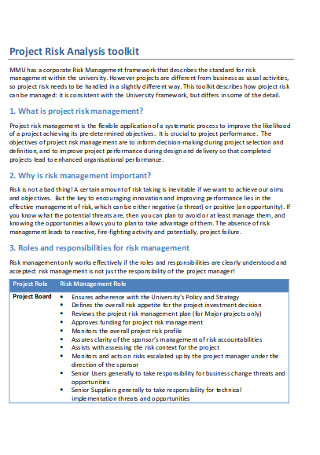
Project Risk Analysis
download now -
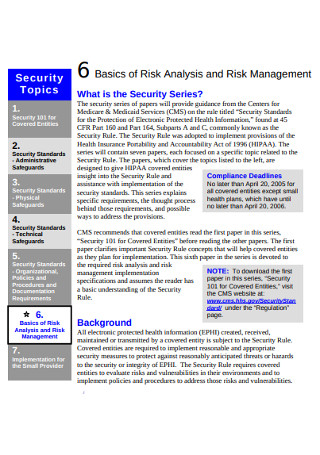
Basics of Risk Analysis Management
download now -
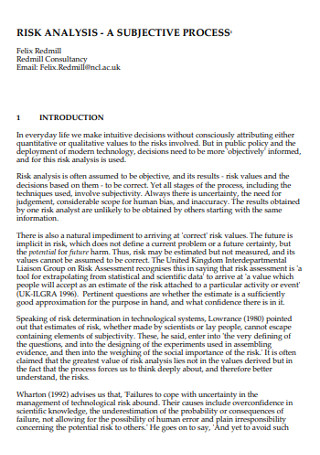
Sample Risk Analysis
download now -
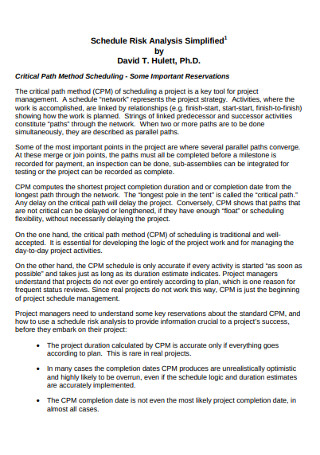
Schedule Risk Analysis
download now -
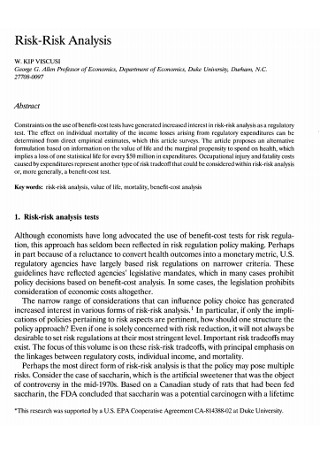
Simple Risk Analysis
download now -
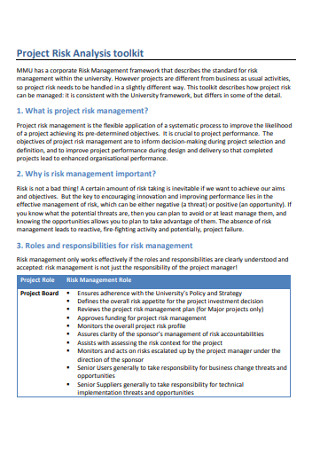
Project Risk Analysis Toolkit
download now -
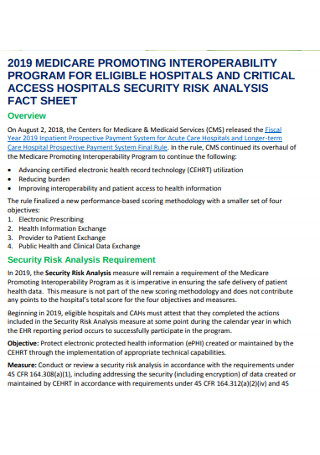
Security Risk Analysis Factsheet
download now -
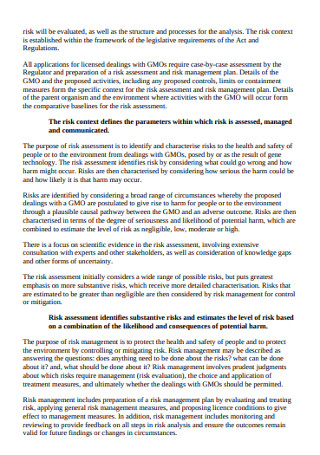
Risk Analysis Framework
download now -

Food Safety Risk Analysis
download now -
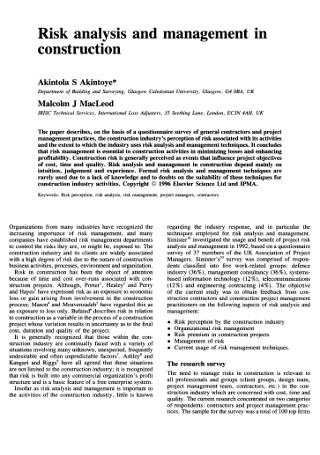
Risk Analysis and Management in Construction
download now -
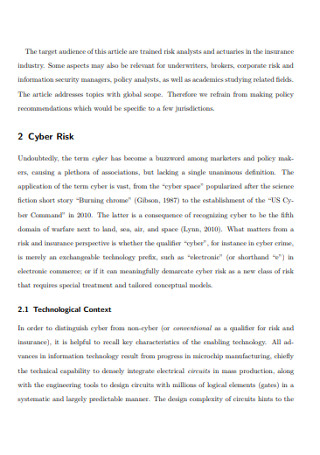
Fundamental Approach to Cyber Risk Analysis
download now -
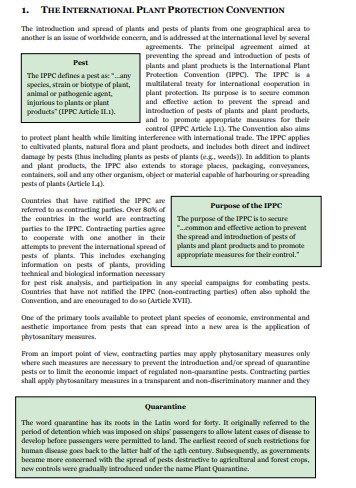
Risk Training Analysis
download now -
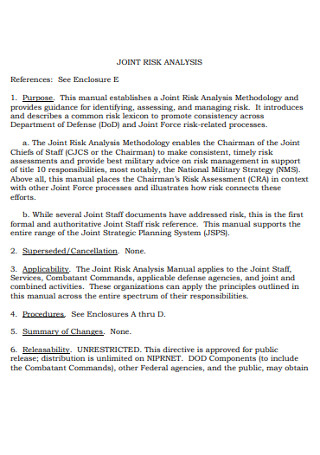
Joint Risk Analysis
download now -

Risk Analysis and Buffer Determination
download now -

Risk Banking Analysis
download now -
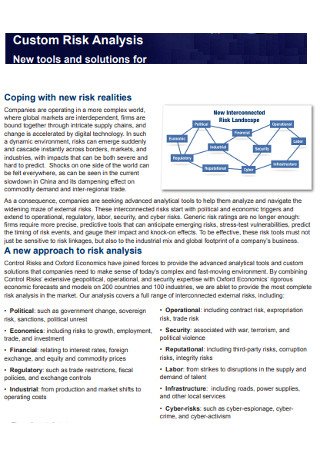
Custom Risk Analysis
download now -
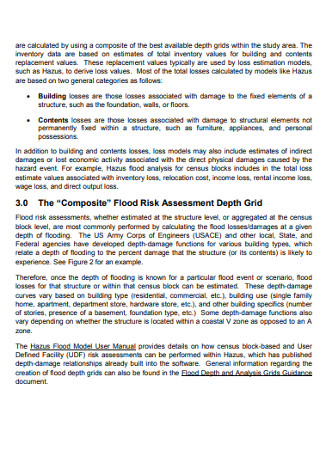
Flood Risk Analysis Assessment
download now -

Resistance risk analysis
download now -
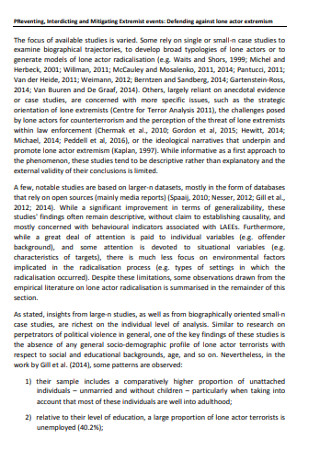
Public Risk Analysis Framework
download now -
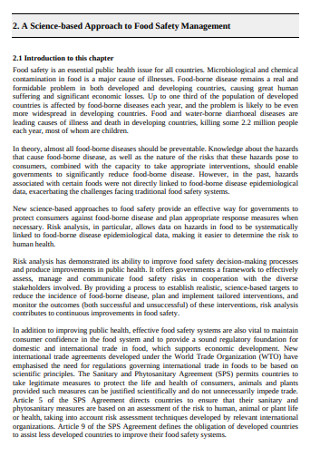
Food Safety Risk Analysis Management
download now -
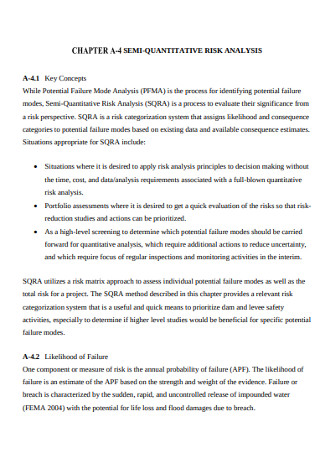
Semi Quantitative Risk Analysis
download now -
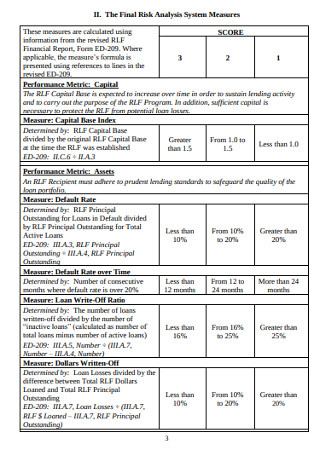
Final Risk Analysis System Measures
download now -

Risk Analysis Request Form
download now -
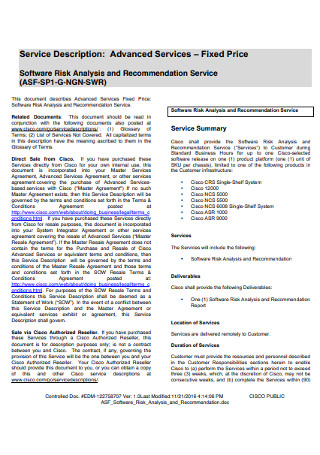
Software Risk Analysis
download now -
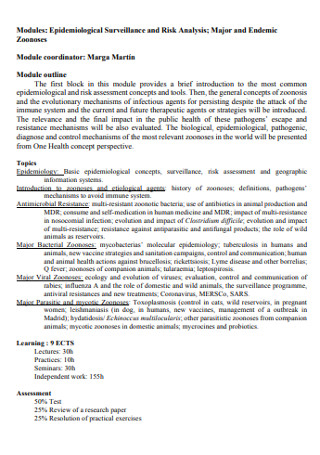
Epidemiological Surveillance and Risk Analysis
download now -

Credit Risk Analysis
download now -
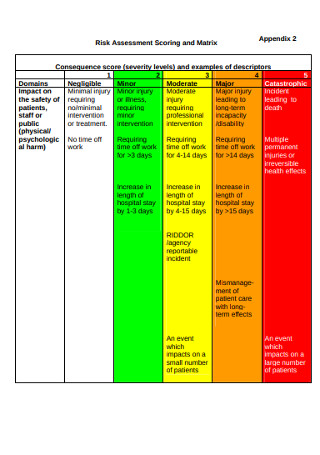
Risk Assessment Scoring and Matrix
download now -
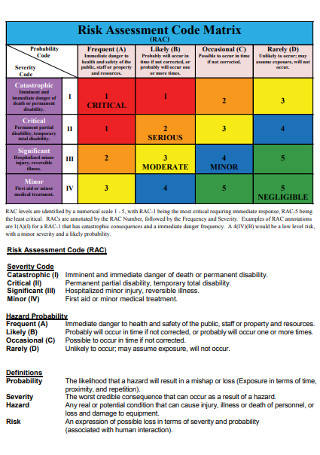
Risk Assessment Code Matrix
download now -
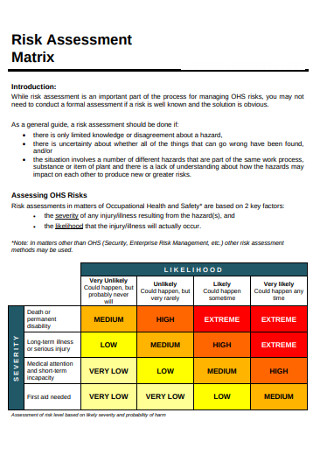
Sample Risk Assessment Matrix
download now -
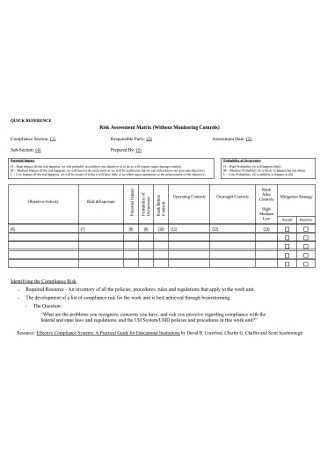
Basic Risk Assessment Matrix
download now -
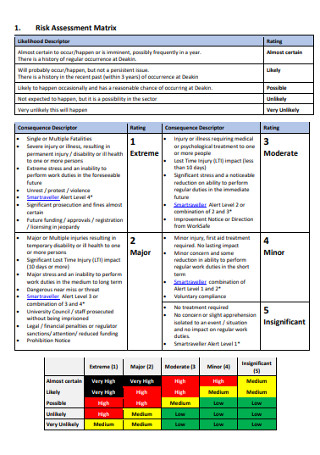
Simple Risk Assessment Matrix
download now -
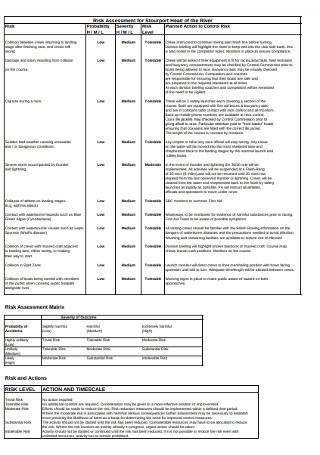
Risk Assessment for Stourport Head of the River
download now -
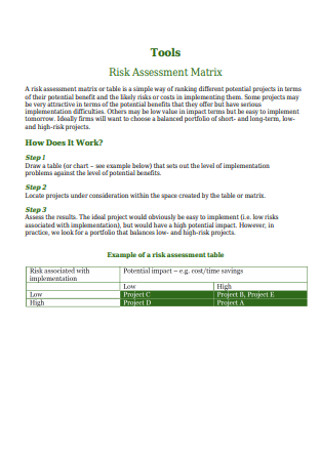
Tools Risk Assessment Matrix
download now -

Privacy Risk Assessment Matrix
download now -

Laboratory Hazard Risk Assessment Matrix
download now -
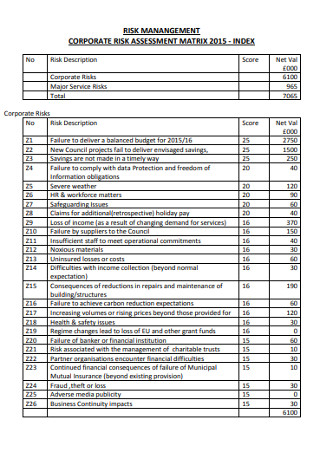
Corporate Risk Assessment Matrix
download now -
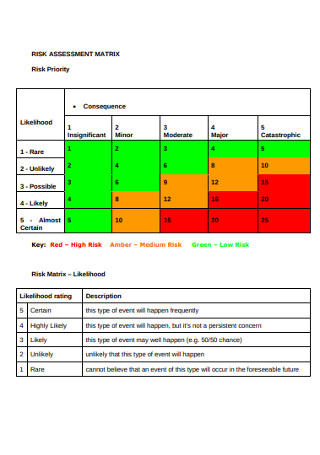
Risk Priority Assessment Matrix
download now -
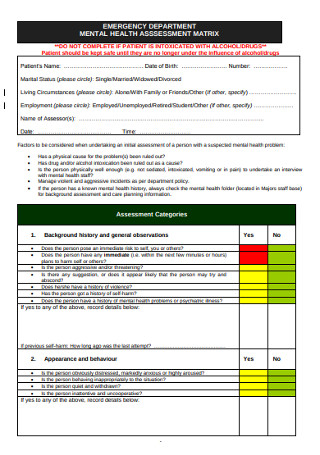
Mental Health Risk Assessment Matrix
download now -

School Risk Assessment Matrix
download now -
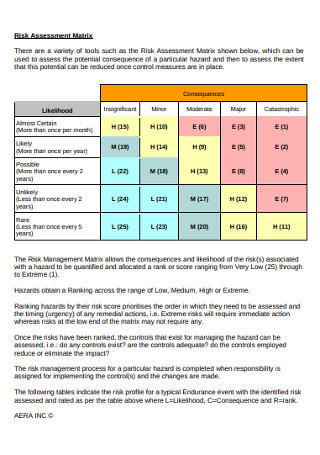
Risk Consequences Assessment Matrix
download now -
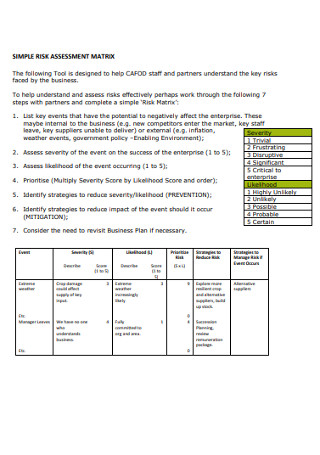
Simple Risk Assessment Matrix in PDF
download now -
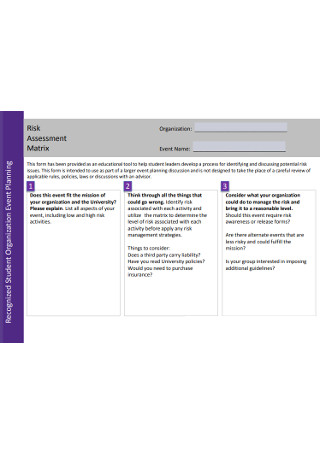
Event Risk Assessment Matrix
download now -
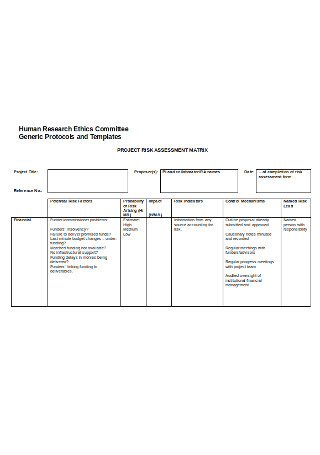
Project Risk Assessment Matrix
download now -
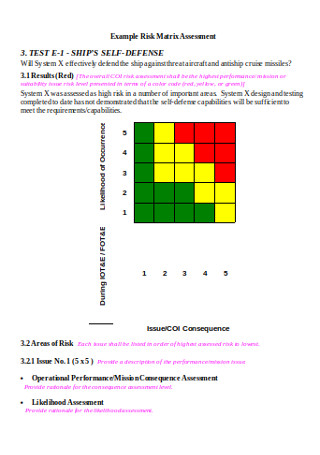
Risk Assessment Matrix Example
download now -

Risk onsulting Analysis Template
download now
On a personal level, people engage in healthy activities that can avoid health-related risks. Collectively, advocates and supporters practice ways of living that are less harmful for the environment. And in a corporate set-up, professionals estimate and calculate risks that have a negative effect on production and reputation. Measures and protocols are implemented to avoid risks in personal, environmental, government, and corporate settings.
What is a Risk Analysis
Risk, per se, is always associated with a negative connotation. It is the probability of something going downhill and the negative consequence that follows. In business settings, business people engage in various risky activities in the hopes of improving their business. A risk analysis is a process that is used to identify and make sense of the uncertainties in these risky activities. This analysis comes up with the list of risks and its consequences when a certain plan follows through. When companies plan to expand or launch new products, risk analysis are used to identify and measure the possible risks involved in planning and executing. Ultimately, its main aim is to increase the visibility of these risks and to create plans and measure to somehow lessen the negative effects. And if possible, although unlikely, to completely avoid the risk.
There are two ways of measuring the risk of a certain plan or project. It can be quantitative or qualitative. Quantitative relies on statistical probability and assumptions to place a certain quantity on the associated risk to a project. On the other hand, the qualitative method provides in-depth and specific definitions of the risks. A 360 evaluation of the risk is also provided, from its nature up to the possible counter methods that can lessen its consequences when it cannot be totally avoided. Risk Analysis, in general, are essential in the planning process of the business plan. Coming up with a comprehensive list of possible risks can help in drafting effective strategies for the company that can save time, financial resources, and reputation.
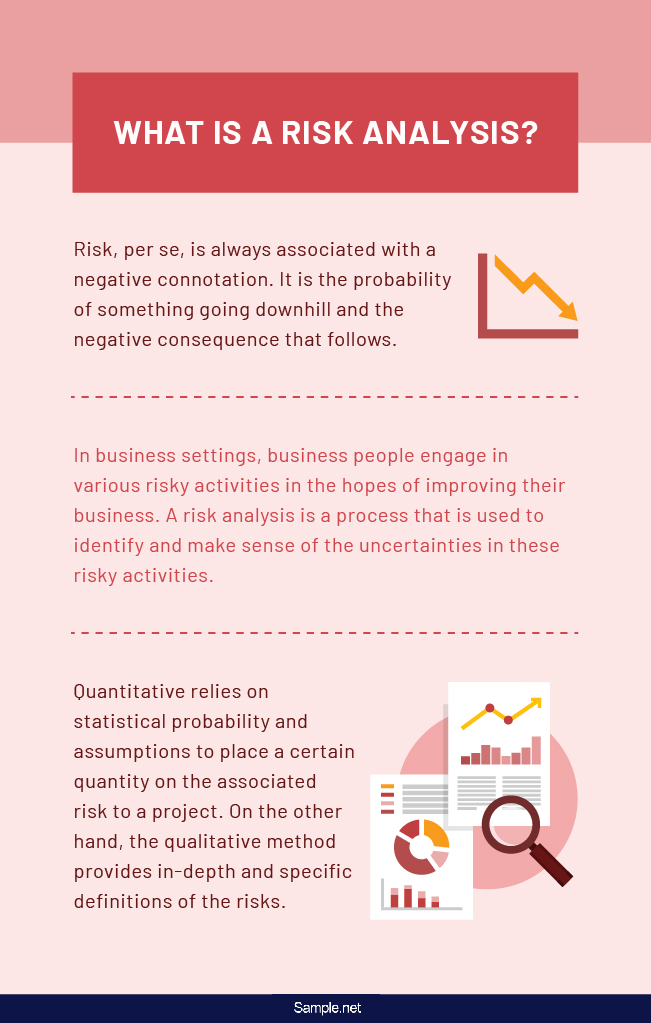
Types of Risk Analysis
Analyzing and measuring the risk for a certain project is vital for any company. A company may do different variations of how they come up with the value and gravity of the risk. The nature of the risks and factors can dictate what the type of risk analysis will be most effective. Regardless of how a certain company goes about with its analysis, the results are more crucial and vital for the success of the company and its future plans.
How to Create a Risk Analysis
An analysis is a detailed examination of elements. A vital step in project management is creating a business risk analysis. Creating one is not as easy as figuring the risk, although it is a crucial step. But, it is more than that. The plan or project must be fully understood and all factors considered.
Step 1: Understand the Project/Situation
In order to create a complete and effective risk analysis, you must fully understand the nature of the project. When the company considers expanding the business in other areas other than the metro, it must consider several factors. Aside from this, a risk analysis can also be used when the company is in doubt about releasing a new product or service. These situations can be met with obvious and unforeseeable forces that can add or lessen the risks. To fully understand the situation, the management can employ environmental scans—determine the relationship between internal and external factors to the organization.
Step 2: Identify the Risks
After a thorough understanding of the current situation of the project, you can segment the situation into segments and then point out the potential risks. The categories are included in the risk management network of the company. Some common examples are IT, operational, and legal risk. With these categories, you can easily point out the risks relating to each. For IT, a common example is software and data breach. Operational risks are usually regarding limited resources, and legal risks are the state and federal changes from the initial formulation of the project. There are several methods to pinpoint these risks such as using SWOT analysis, cause and effect diagrams, and decision matrices.
Step 3: Evaluate the Threats
After coming up with the list of potential risks and hazards, the next best thing to do is to evaluate each one on the list. Evaluate the extent of the consequence of each risk. This is where the qualitative method comes in handy, as it needs to be done in any project. Come up with extensive evaluations of the risks which include all its possible effects and its implications on the business. Furthermore, an evaluation of all the threats can paint a clear picture of the struggles and setbacks that the company may face in the long run of the project.
Step 4: Rank the Gravity of the Risks
Right after painting a clear picture of the risk, it is easy to weigh and rank the gravity of the risks and its consequences. Ranking the risks provides an idea on which to prioritize and which can be easily mitigated. Contingency plans can be made for priority risks. There can also be tweaks and changes in the initial plan of the business to avoid minor risks. Although risks are met at every turn especially in business dealings, the thorough evaluation of the plan and its risks can help in coming up with the best and safest situation for the company.
Step 5: Create Contingency Plans
Risk analysis does not stop at pointing out and making the risks salient. Identifying and evaluating the risks are not enough. The business should be proactive in creating countermeasures to avoid or lessen the negative consequences of the imminent hazard or danger. Creating a contingency plan is an example of a countermeasure. These plans are for possible situations in the future. As a growing business, there is a need to always think ahead, especially when the upcoming situations are damaging to the organization. Indeed, it is best to stay prepared and safe than be sorry.
Dos and Don’ts of Creating a Risk Analysis
The complexities of the corporate world can never be predicted. The demand of the people, the flow of resources, the innovations in technology are constantly changing and corporations are only doing what is expected from them, they try to catch up. Always keep in mind that effective risk analysis will not completely erase the risks, rather it will make it obvious before it hits and does its damage to the company. Here are some guidelines to come up with the best possible risk analysis for your business.
Dos
1. Do review previous similar plans and projects
The filing of project reports are essential for the record-keeping of the company. These reports are also excellent resource materials when drafting up risk analysis for future plans which have similar frameworks and fundamental elements with previous successful projects. Essentially, a complete project report provides information regarding the problems and setbacks that were encountered and what were the actions done to mitigate the costs.
2. Do take note of all the possible risks even if they seem insignificant
Sometimes, what seems to be the most insignificant factor brings in the greatest disruption to how things should be. In projects, little time delays may seem to be insignificant and unimportant at first, but it becomes a great risk in the end. Because of these minute delays, the project may not be done and delivered on time. This lapse may have adverse effects on the resources and reputation of the business. So, it is crucial to take note of all kinds of risks even if they are not obvious at first glance. Another thing to consider are impossibilities. In your brainstorming, you may come up with impossible situations that you choose to brush off. But, these situations are also important to consider. Regardless of how impossible these situations may seem, there are still slight chances that it would happen.
3. Do have a holistic approach
A risk universe contains all the possible risks that can affect a particular unit. A company’s risk universe can be divided into several sections such as operational, legal, and IT. You can add as much sectors that you consider as vital to your company’s progress. For each sector, make sure to give enough time for brainstorming and discussion to identify all the potential risks and hazards. Apart from the individual risks, do not forget to have cross-section checks. This means considering how the factors from one section affect the variables in the other segments of the risk universe. Having a holistic approach means taking in all possible relationships of the variables and how one factor affects the others. In this process, it is important to have an open and creative mind. Apart from that, the team that are involved in the planning must be knowledgeable enough about these sectors to provide insight into the possible threats.
4. Do take note of the method’s limitations
Both approaches for risk analysis have limitations. The qualitative approach relies too much on relative definitions and not on facts. On the other hand, the quantitative method base on relative and assumed values. Moreover, this approach are assumed to occur in situations where the values are normally distributed which rarely happens in real life. This assumption is in a vacuum. Far from real-life scenarios which are either skewed to either side. To sum it up, there are no standard measures for both approaches.
Dont’s
1. Do not forget to gather information from supplementary documents
Aside from using information from the previous project and business plans, there are also other business documents that are great resource materials for the analysis. The financial documents of the company can be used to track if the budget is enough for the whole duration of the project. Furthermore, marketing strategies and forecasts can help determine the situation of the environment and the standing of the company in contrast to its competitors. And to make sure that the project guidelines are safe and to lessen the chances of incurring legal risks, security protocols come in handy.
2. Do not fully rely on the risk specialist
Risk management specialist are specially trained and skilled in pointing out risks for the company. But, even if they know more about the methods and they are more exposed to the specific field for a long time, they do not know the inner workings of the company as much as those who are in it. It is best to work hand in hand with them. To provide them with the details that are crucial to producing accurate output. Also, if the specialists work on their own, their assumptions about the gravity of some of the risks may be more than or less than what you would want.
The aim of a business is to gain advantage over other competitors. One way of winning over other similar businesses is to win over adversities and risks which are encountered at almost every turn. Winning over these proves that the management has perfected a strong and flexible risk management plan that can cope with all kinds of risks that the management encounters when engaging in new projects and plans.
